On Sunday 9 July, Wesley College Principal, Nick Evans (OW1985) and Town Mayor, Sandy Evrard unveiled a plaque in the market square in the town of Mesen/Messines in Belgium to commemorate the bravery shown by Robert Grieve VC (OW1904) during the June 1917 Battle of Mesen/Messines.
The plaque was designed by Dr Ross Bastiaan (OW1968), internationally recognised for his battlefield and other plaques. The new plaque stands adjacent to Ross’ 30-year-old Battle of Mesen/Messines plaque.
Dr Bastiaan said, ‘This plaque rightly provides a permanent marker of the bravery of not only Captain Grieve, but the contribution of all Australian troops who fought in this action. I am delighted that the Mesen/Messines Town Council has graciously permitted this plaque to be installed here.’
Also present at the unveiling were councillors of the Mesen/Messines Town Council, Wing Commander Jesse Laroche, the Australian Defence Attaché based in Brussels and several representatives of Wesley College, including OWCA President Kate Evans (OW1998). Local members of the community also attended.
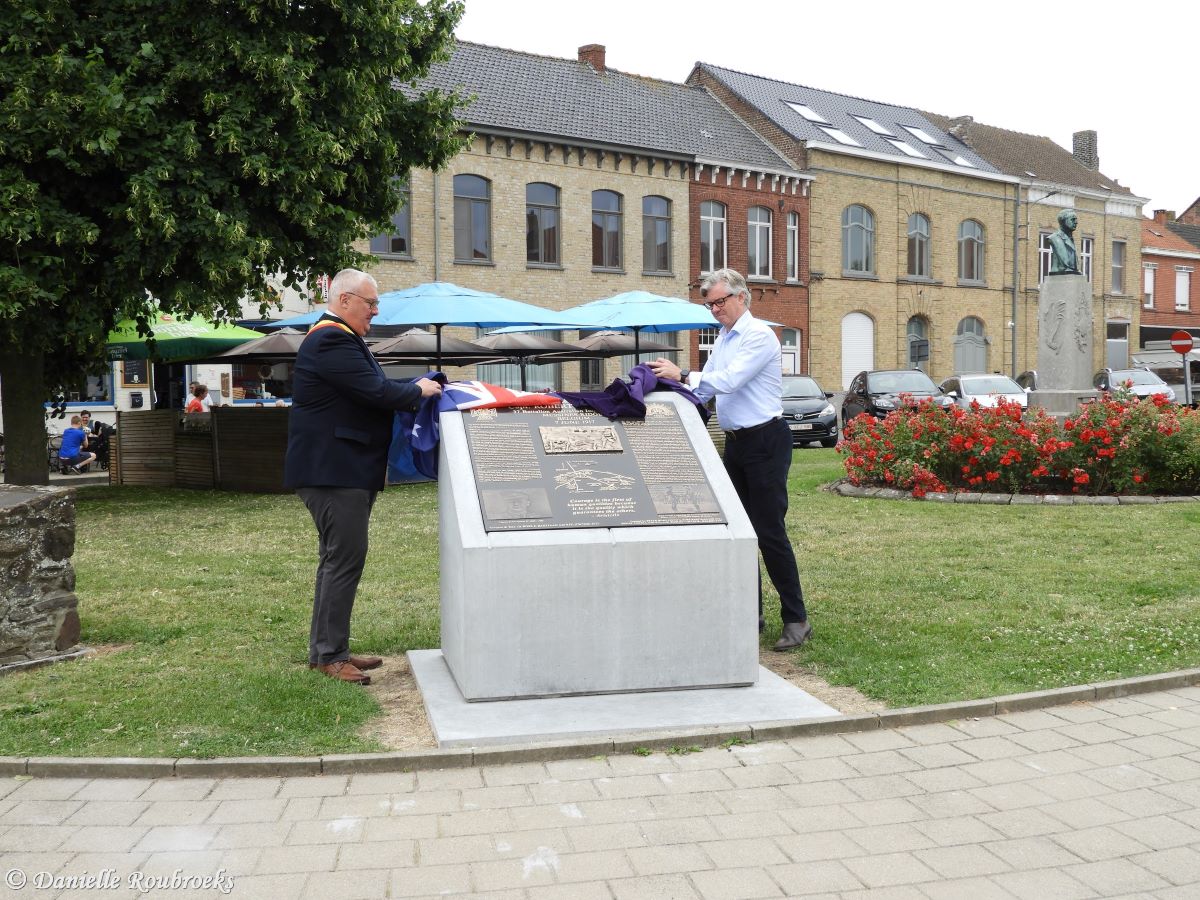
On 9 June 1917, Robert Grieve led 200 men of ‘A’ Company, 37th Battalion into their first major action on the modest slope of the Mesen/Messines ridge in Belgium.
Having already suffered a massive gas attack from the Germans, his company came under sustained fire and was being held up by barbed-wire defences. As the only officer in his company who was not dead or wounded, Grieve made his way through a gap in the wire to attack a machine-gun post.
He had been a good left-arm bowler at Wesley and his well-aimed grenades silenced some of the gunners, allowing him to reach the nearby trench and bomb the rest of the machine-gun crew. Grieve was wounded in the action, but survived the war and later wrote about that day in a letter to his parents:
‘We had run into a pretty tight corner, as you will have read by all accounts, so I had to put all the company under cover in shell holes. Those with me wanted to come on our little stunt and I had to threaten to shoot two of them if they did not obey orders and remain where I told them.
Off I went, bowling against the wind and got the usual number of wickets. I was surprisingly lucky when you come to think of it because the first two guns as well as two in rear of them were kicking the dust up all round me.
It was not long after this that I got a smack on the shoulder as I have described to you in a previous letter – it sounded just like the smack of a bullet through a target… this spun me round two or three times and I fell flop. Crawled into a shell hole and pulled my equipment off.’
In his remarks at the unveiling, Nick Evans noted: ‘Bob Grieve’s action that day stood as a testament of the man he was. A quiet but determined leader who, when the moment came, decided that he alone would move to take out an important enemy position with no more than a few hand grenades.’
News of his award was front-page news in England and Australia. It was the first major action for the AIF Third Division (under the command of John Monash) and his old school was proud to point out he was the first APS man to be so awarded.
It was the recommendation of two sergeants in his company that was put forward to higher command to award a VC for his bravery. After the announcement of the VC award, his men wrote and signed a letter to him that included this sentence:
‘We will cherish with pride your deeds of heroism and devotion which stimulated us to go forward in the face of danger, and at critical moments, to give the right guidance that won the day and added to the banner of Australia, a name which time will never obliterate.’
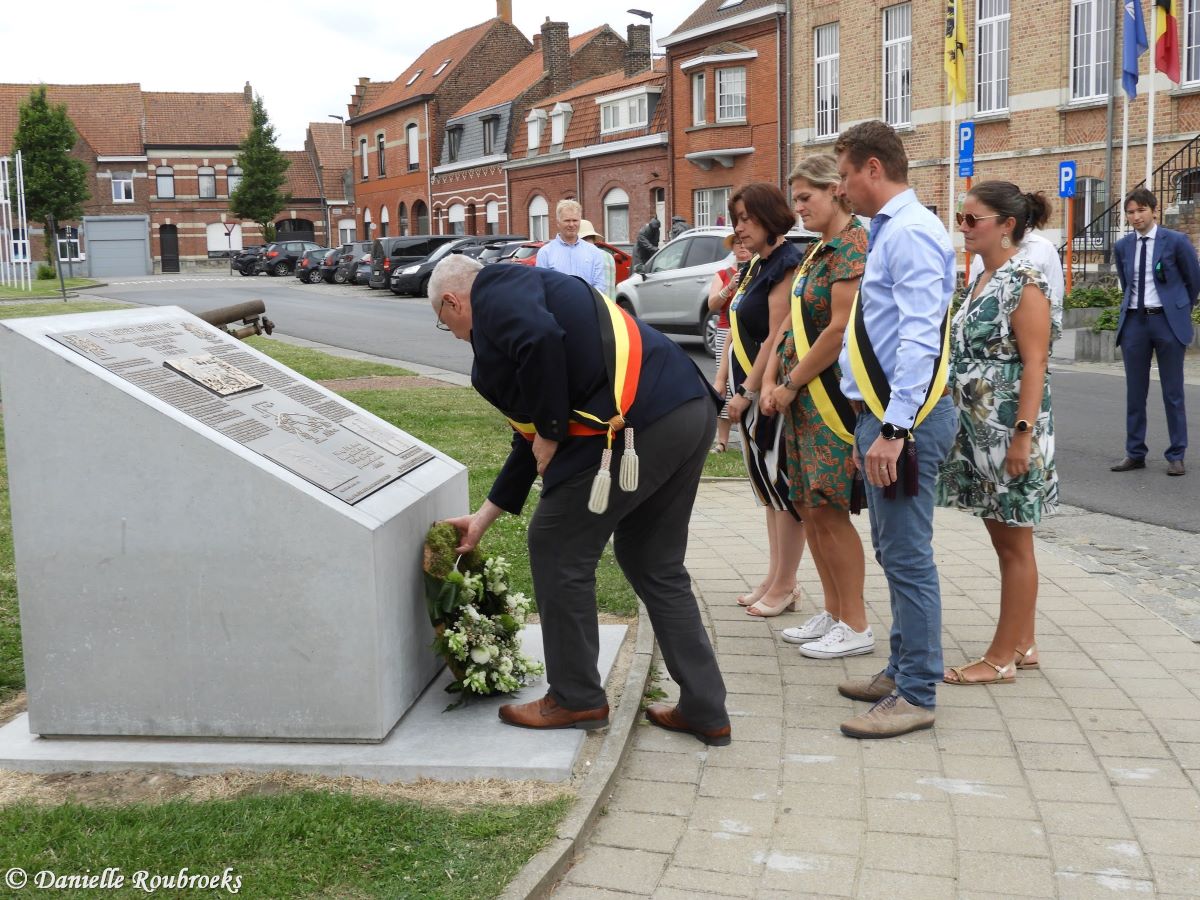
History of Grieve’s VC
Robert Grieve is one of 101 Australians to be awarded the Victoria Cross (VC), the highest military medal for conspicuous bravery under fire.
Thanks to the generosity of the Grieve family, Wesley College became the proud owner of his VC in 1959 following his death in October 1957. For many years it was on display in Adamson Hall, but when the trophy cabinet was removed, it was stored in a safe and brought out for display on Anzac and Remembrance Days.
A few days after Remembrance Day 1989, it survived the fire that swept through the St Kilda Road Library. In 2003, the College agreed to loan the VC to the Shrine of Remembrance and being its only VC on display, is now one of the Shrine’s major attractions.
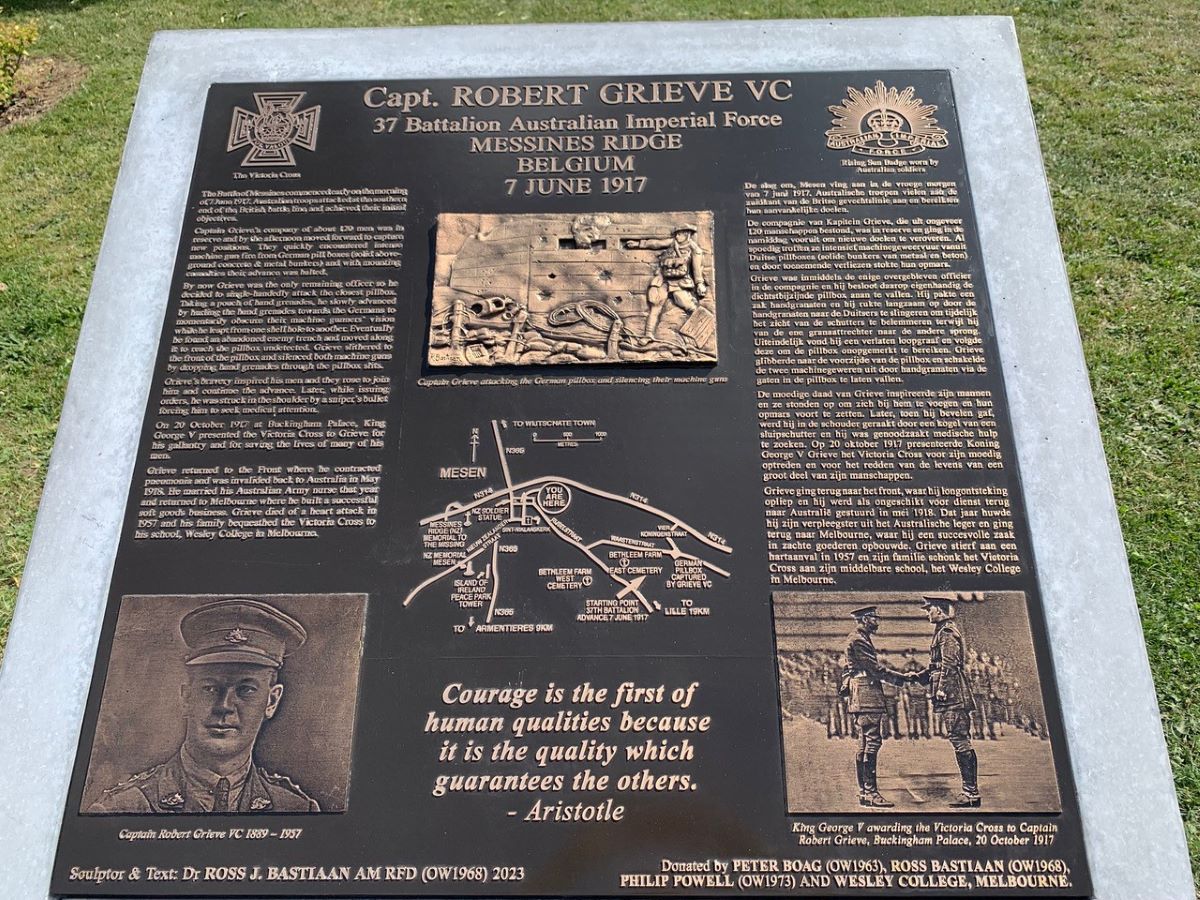
Honouring our own
The College is pleased to continue its recognition of Robert Grieve VC as one of its most eminent OWs. Funds for the plaque were raised from a small number of OWs and supporters, but the disruptions of COVID meant the project took almost four years to complete.
Initiator of the plaque, Philip Powell (OW1973) said, ‘It is amazing to see this finally come to fruition. The College acknowledges the magnificent contribution by Ross Bastiaan in designing the plaque. It is now intended for a similar plaque to be installed at the St Kilda Road Campus later this year.’
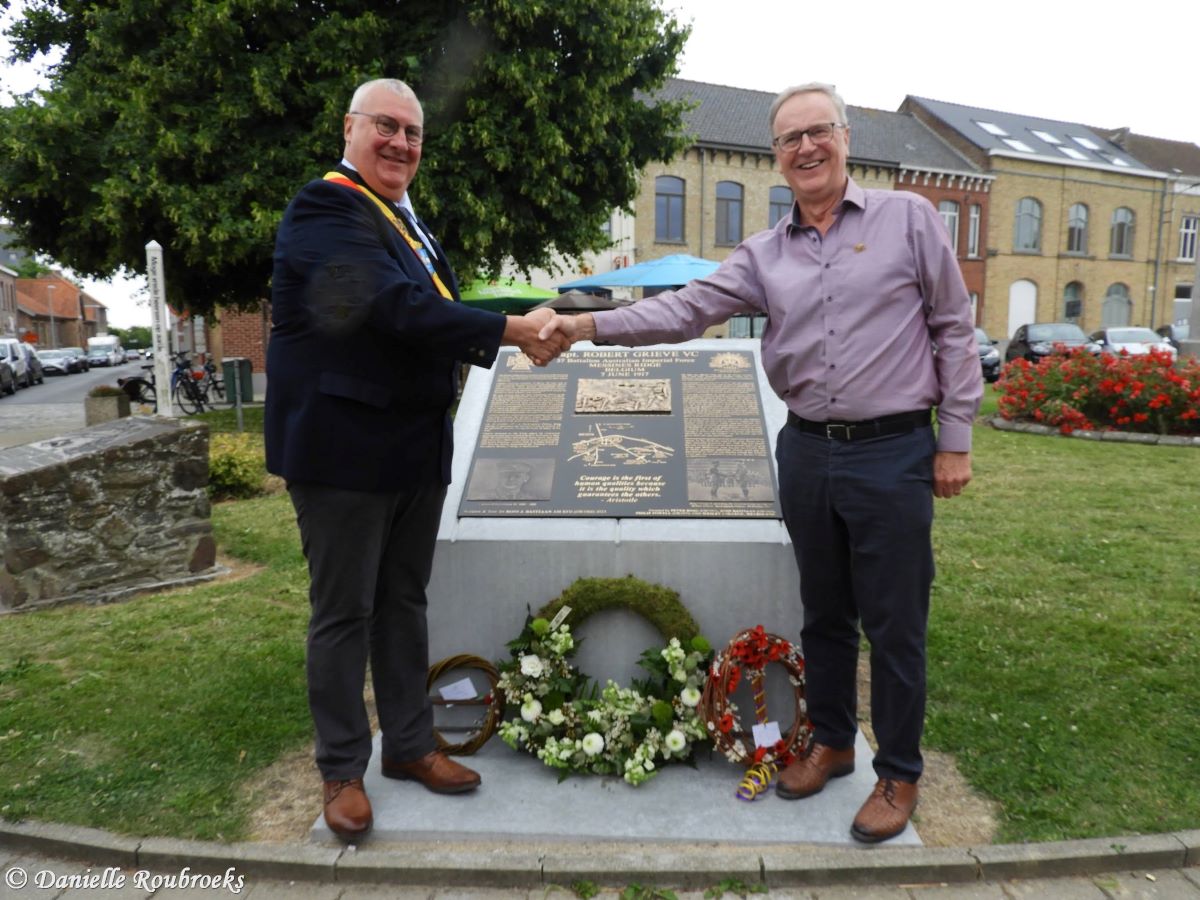
Mark Hibbins (OW1978), representing the Collegians Football Club at the unveiling of the plaque in Belgium, told the audience, ‘Bob joined Collegians Football Club in 1911 as a player and later, served as Vice-President for many years. We continue to honour him today with the Captain Robert C Grieve VC Medal awarded to the best male and female players from both the Collegians senior teams following the annual Anzac Day match.’
Incidentally, on the Saturday prior to unveiling the plaque, the attending Wesley contingent conducted a tour of the battlefields and cemeteries in the Ypres area. The group visited the graves and memorial of ten OWs, including Herbert Dickinson and Eric Kerr, who both have memorial doors in their honour at Adamson Hall.
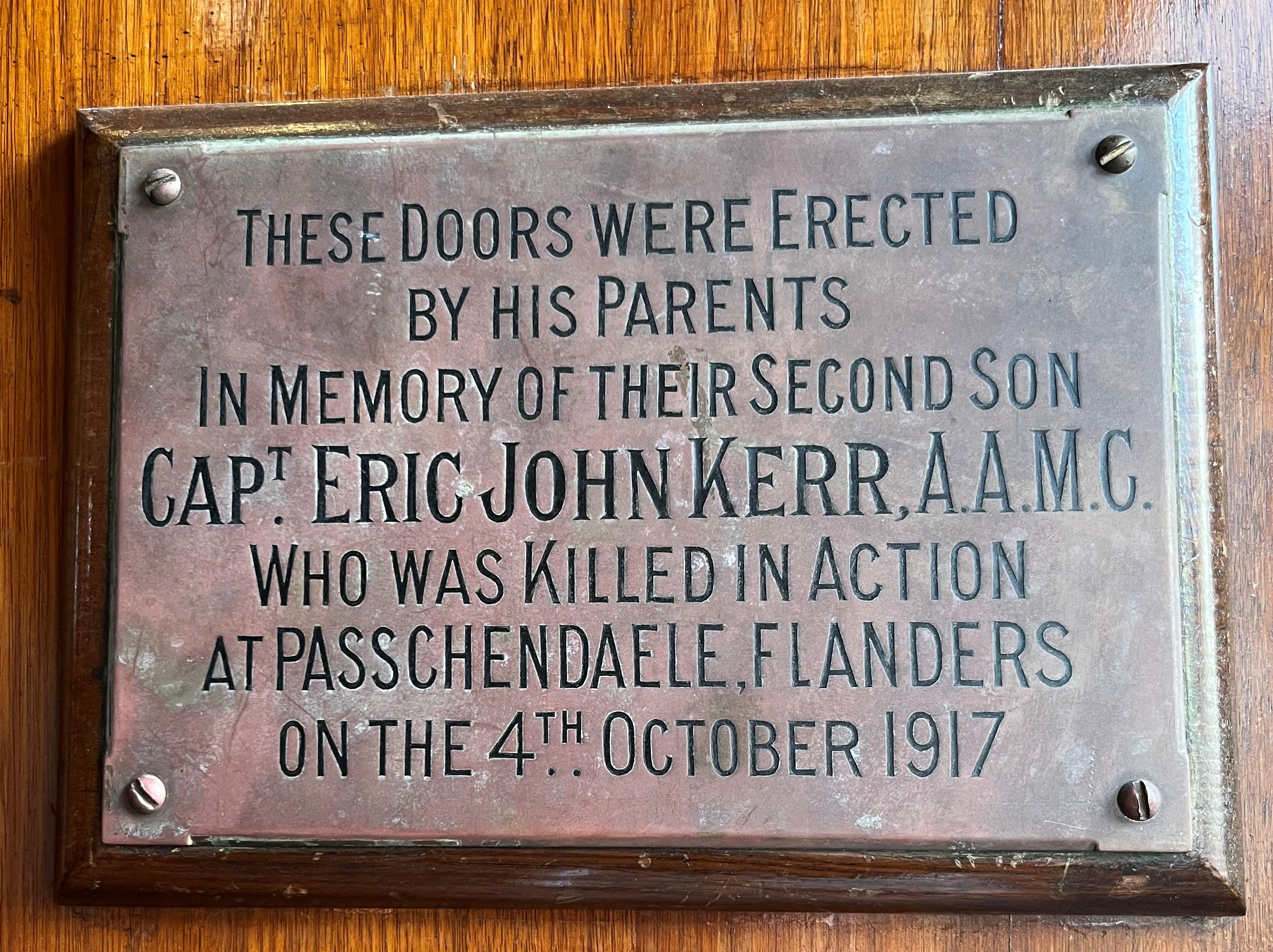

There are another nine OW names on the Menin Gate Memorial to the Missing. The great uncle of Principal Nick Evans is also named on the memorial.
During the Last Post service on the Saturday evening, Nick and Philip Powell laid a poppy wreath in honour of all OWs who served in WWI.
Mesen/Messines photos courtesy of Danielle Roubroeks
